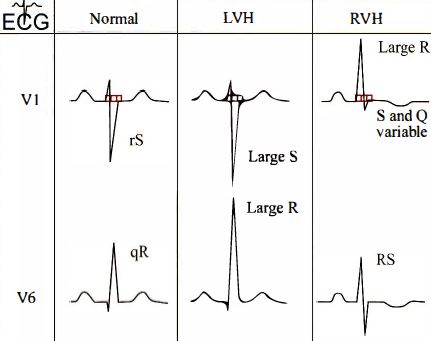ECG-ALGORITHM
From NeuroRehab.wiki
Revision as of 01:50, 17 December 2022 by Dr Appukutty Manickam (talk | contribs) (Imported from text file)
RATE
1. ASSESS RATE: 300/(large squares) interval in mm. Bradycardia if HR < 60/min; tachycardia if HR > 100/min. RYTHM
2. ASSESS RYTHM: RR intervals (1 small square variation is normal) & check that a P precedes a QRS complex.
INTERVALS
3. EXAMINE PR INTERVAL: normal 120-200ms, prolonged if heart block present.
4. EXAMINE QRS INTERVAL: normal < 100ms. Prolonged in BBB, WPW, ventricular pacemaker, tricyclics.
5. EXAMINE QT INTERVAL: 340-470 ms. Prolonged in tricyclic overdose, hypo-Ca/Mg/K, starvation, hypothermia, quinidine, sotalol, amiodarone use.
WAVEFORMS
6. INTERPRET WAVEFORM.
7. ASSESS ST-SEGMENT: elevated in ACS, pericarditis, Prinzmetal angina and others.
OTHERS
8. ASSESS AXIS: Normal is -30 to +100. +I +aVF: normal; -I +aVF: RAD; +I -aVF: LAD; -I -aVF: RAD/LAD. LAD is a marker for CAD, RAD is normal for children, young adults; RVH in older adults.
9. ASSESS HYPERTROPHY:
10. ASSESS BRANCH BLOCK: LBBB (QRS 120-180 ms), RBBB (QRS > 120 ms)
<img src=paste-b85645b70154480c5df1ba6fe935c0cd1363d585.jpg>
Reference(s)
Gale, M., Grantham, H., Morley, P. and Parr, M. (2016). Advanced Life Support Level 1: 3rd Australian Edition. Australian Resuscitation Council.
American College Of Surgeons. Committee On Trauma (2012). ATLS : student course manual. Chicago, Ill.: American College Of Surgeons.
